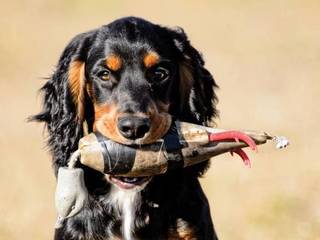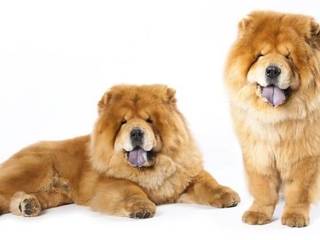Buying a puppy is a very serious step; it is fun, pranks, but also a great responsibility for a tiny helpless creature. In addition, of course, we do not want pet suffer or feel bad. Therefore, when choosing a puppy it is still necessary to pay attention not only to the color, breed and sweet attractive snout, but also on the health of a potential pet.
How to differ a healthy puppy from the sick one? There are obvious signs of illness of the four-legged friend:
- - watery, miserable eyes;
- - dry nose;
- - fallen or excessively swollen belly;
- - matted hair;
- - a puppy is inactive, lies;
- - it whines and moans;
- - staggering;
- - vomiting or diarrhea;
- - lack of appetite (you can ask the owner to feed the puppy when you are there).
However, cute, and funny puppies can have diseases that are invisible to the naked eye. Therefore, do not rush with a choice of pet, and carefully inspect palpate a pet. Examine the puppy's head for fontanels; it has to be overgrown. Feel the nose, in good condition it should be cool and moist, and after physical exertion and heat a little warm. Squeeze its nostrils for a few seconds, if the dog has rhemua, it may be allergic or airway passage inflammation.
Almost all breeds (except bulldogs, pugs and boxers) nostrils should be wide open when inhaling.
Also, examine its teeth with special attention. It depends on the correct bite, whether a puppy can chew food properly, which directly affects the entire digestive system, and as a result the health of the dog in general. According to the standard, upper incisor teeth should closely overlap the lower (as a scissor bite). The puppy has an overshot bite if there is a gap of a match head between the upper and lower incisors. Such bite does not improve with age. However, if the lower incisors are put forward to the front it is an undershot. For some breeds (Bulldogs, Bull mastiffs, Bordeaux dogs, pugs, Mastiffs) it is the norm, but for others it is a birth defect. Incisor teeth should ideally be placed in one line. It is also advisable to inspect the gums, they should be pink and clean; but too pale gums talk about anemia, which may be due to helminthic invasion.
Eyes of a puppy should not mow, and look forward smoothly. Red eyes with brown streaks talk about conjuctivitis, which in turn may be the result of severe chronic diseases. Eyelids should close the eyes well, do not leave gaps, although in some species they look saggy. Eye color of toddlers is mainly blue and age changes pupils to brown, in healthy puppies they are without white spots and furrows. A third eyelid should be noticeable, but in any case not inflamed.
Nevertheless, there is no standard for the ears, each breed is unique; some puppies' ears should stand up, others only rise with age, for the third they must be hanging. However, you need to check the ears and auditory canals were clean and free of sores, redness and sulfur clusters. If your dog shakes and tilts, its head there is an otitis. If the tips of the ears are covered with a crust, bald, wounds - the puppy may have itch mite. You also need to check your puppy's ears, as in some breeds deafness gene occurs.
Gently press down the trachea, if the puppy coughs - this indicates inflammation of the bronchi or trachea. You can check your puppy at heart defects only in a vet clinic, although if the animal has serious problems it is very weak, sluggish and breathes heavily.
Puppy's hair and skin must be healthy and clean. Receding hairline, inflamed places, flaking indicate the presence of parasites or eczema. Places without hair are the result of denying or scabies.
Look at the puppy's belly; turn it over the back, on the subject of protrusions - as seems possible, umbilical or inguinal hernias. A small hernia with age can leave, but larger hernia have to be cut. Also, inspect the genitals of the puppies, excessive discharge may also indicate disease.
Puppies are also susceptible to rachitis, so you should examine the baby's limbs. Most breeds have straight, and movements are coordinated and free.
Especially meticulously inspect the puppy if he was the last of the litter, perhaps it has a defect that is noticed by previous buyers.
It is better to buy a puppy from proven reputable breeders who have passports. In the market, without any accompanying documents it is a risk and you can buy a sick puppy, and even mongrel thoroughbred dogs in return. Let these tips help you choose a puppy that will not only be a pet, but also a true friend.






